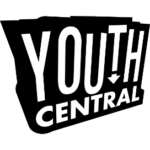When youth immigrate, they don’t just traverse borders instead, they approach a new world of expectations, languages, and identities. In Canada, immigration policy not only defines who gets in but also how it can shape immigrant youth belonging, cultural connection, and how they see themselves reflected in society.
It is important to note that cultural identity remains dynamic, especially for youth who grow up trying to balance between two or more worlds. Immigrant youth face a silent pressure: to fit, but not forget your roots, to assimilate to a perfect point. Speak English fluently, but don’t lose your mother tongue. Embrace diversity, but don’t be the kind of “ethnic” that makes others uncomfortable. Such contradictory and socially set expectations create tension and confusion for young people trying to navigate their identities at an already vulnerable time.
Despite being known for it’s multiculturalism, in Canada, immigrant adolescents still face barriers in their daily life, especially in our school systems. The differences in language, a lack of culturally inclusive curriculum and community, as well as limited access to mental health resources, contribute to a feeling of invisibility.
Therefore, Representation matters. When immigrant youth see their cultures, languages and lived experiences reflected and respected, they are more likely to thrive, creating a happier and cohesive community we can all call home. Representation doesn’t just mean having diversity in the brochure but making sure youth voices and perspectives are included in decision-making, that their stories are told and passed down, and that the system is designed with their realities in mind and not against them.
Immigration policies should be involved in more than just entry to Canada–rather, they should support belonging for the future of Canada. That includes supporting mother tongue education, funding youth-led cultural initiatives and offering programs that celebrate immigrant heritage instead of pressuring assimilation. True inclusion isn’t about blending in. It’s about being able to show up as your true self.
Youth across Canada are already leading this change through clubs, advocacy, storytelling and community building. It’s time to ensure that systems catch up.
Belonging isn’t earned, it’s a starting point.

